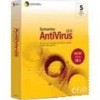Symantec 10551441 Client Guide - Page 14
About security risks - removal tool
 |
UPC - 037648270472
View all Symantec 10551441 manuals
Add to My Manuals
Save this manual to your list of manuals |
Page 14 highlights
14 Introducing Symantec AntiVirus About security risks About security risks Security risks are classified by the behavior in which they engage and the purpose for which they appear to be designed. Unlike viruses and worms, security risks do not self-replicate. Symantec AntiVirus can detect, quarantine, delete, and remove or repair the side effects of security risks in the following categories: ■ Spyware: Stand-alone programs that can secretly monitor system activity and detect information like passwords and other confidential information and relay the information back to another computer. Spyware can be unknowingly downloaded from Web sites (typically in shareware or freeware), email messages, and instant messenger software. You may unknowingly download spyware by accepting an End User License Agreement from a software program. ■ Adware: Stand-alone or appended programs that can secretly gather personal information through the Internet and relay it back to another computer. Adware may track browsing habits for advertising purposes. Adware can also deliver advertising content. Adware can be unknowingly downloaded from Web sites (typically in shareware or freeware), email messages, and instant messenger software. You may unknowingly download adware by accepting an End User License Agreement from a software program. ■ Dialers: Programs that use a computer, without your permission or knowledge, to dial out through the Internet to a 900 number or FTP site, typically to accrue charges. ■ Hack tools: Programs that are used by a hacker to gain unauthorized access to your computer. For example, one hack tool is a keystroke logger, which tracks and records individual keystrokes and can send this information back to the hacker. The hacker can then perform port scans or vulnerability scans. Hack tools may also be used to create tools for virus creation. ■ Joke programs: Programs that can alter or interrupt the operation of a computer in a way that is intended to be humorous or frightening. For example, a program can be downloaded from Web sites (typically in shareware or freeware), email messages, or instant messenger software. It can then move the trash can away from the mouse when you attempt to delete or cause the mouse to click in reverse. ■ Other: Security risks that do not conform to any other security risk category, but that may present a security risk to your computer and its data.















